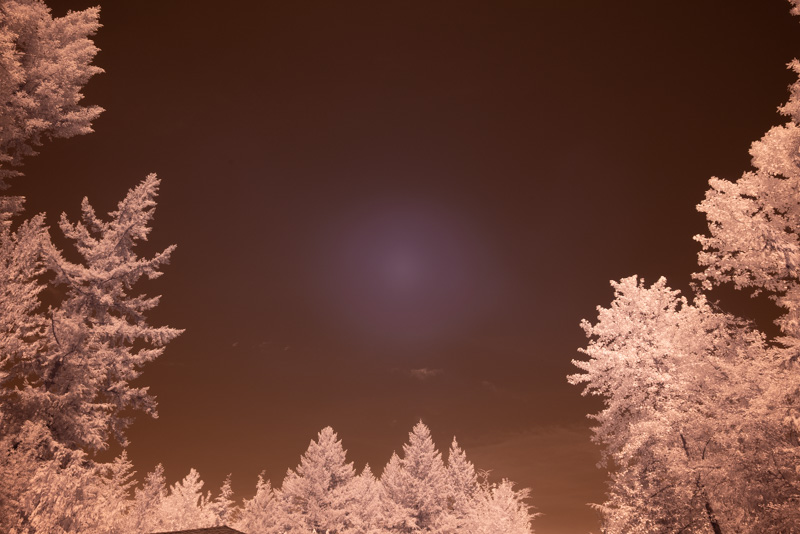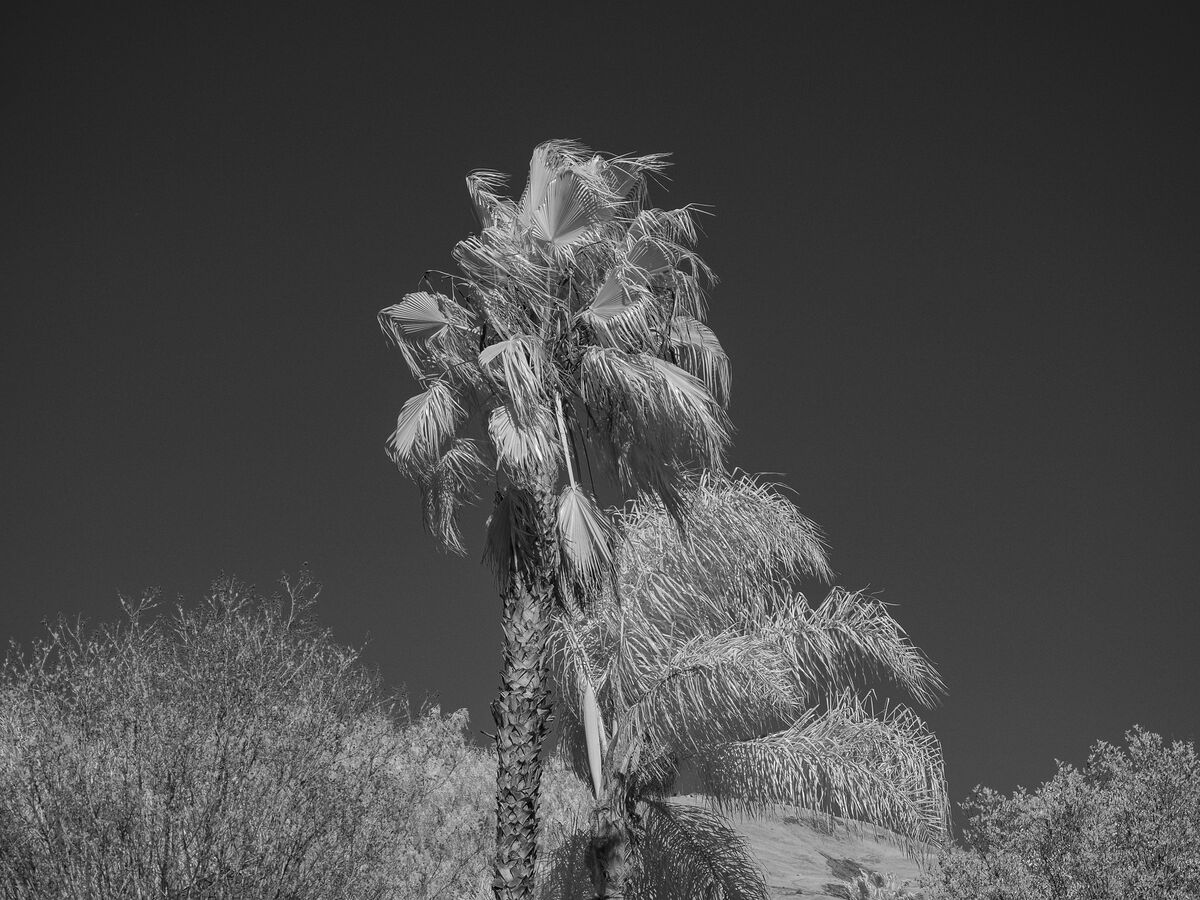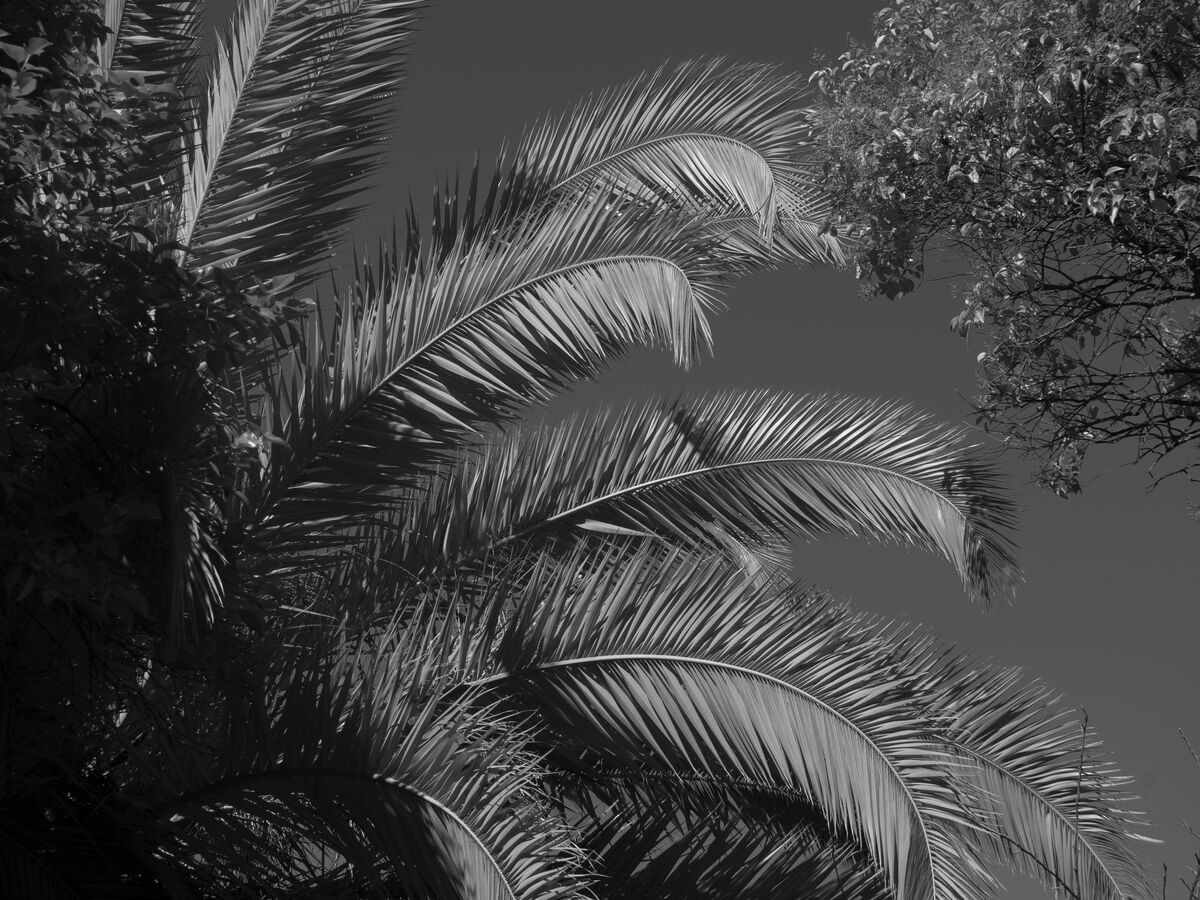Nikon for Conversion to Infrared, and best place to get camera converted.
Aug 12, 2023 13:46:50 #
My only digital camera is a D500 and I want to keep that as is. I want to get a Nikon digital (not a pocket camera) with somewhere between 20 to 24 MP) to convert to take IR and/or UV pictures.
Questions: (1) Which DX digital body would you recommend and (2) would you get one that's already converted by the conversion service or a separate body, (3) which service would you recommend (I only know of Lifepixel, Kolari and Spencer camera), and (4) would I need filters for each separate lens if I go for full spectrum conversion?
Thank you very much in advance for any advice,
Sincerely,
Baer
Questions: (1) Which DX digital body would you recommend and (2) would you get one that's already converted by the conversion service or a separate body, (3) which service would you recommend (I only know of Lifepixel, Kolari and Spencer camera), and (4) would I need filters for each separate lens if I go for full spectrum conversion?
Thank you very much in advance for any advice,
Sincerely,
Baer
Aug 12, 2023 14:36:38 #
1. I would choose a mirrorless camera if affordabl. Any lens should af that way.
2. I bought a sony a-65 on ebay so no comment here.
3. I had Isaac Szabo do the coversion, prompt, good job, quite a bit cheaper than the others.
4. No, just buy filters at least as big as your largest diameter lens and use step down rings.
Hope that helps.
2. I bought a sony a-65 on ebay so no comment here.
3. I had Isaac Szabo do the coversion, prompt, good job, quite a bit cheaper than the others.
4. No, just buy filters at least as big as your largest diameter lens and use step down rings.
Hope that helps.
Aug 12, 2023 14:58:58 #
larryepage
Loc: North Texas area
baer wrote:
My only digital camera is a D500 and I want to kee... (show quote)
I have a converted D90 which works pretty well. I agree that a mirrorless midel would be ideal, but any DSLR that has Live View would be workable.
Lens choice can be tougher. Since glass elements can pass infrared light differently from visible light, hotspots can be a problem to watch out for. The old 18-70mm DX zoom wasn't a great lens for photography in my opinion, but it seems to work quite well for IR.
I do not have experience with ultraviolet, but I do know that a relatively thin layer of glass will absorb (or disburse) a lot of UV. So that selection is going to be more problematic.
Investigation and experimentation is part of extended spectrum photography. So be prepared to make it part of the fun.
Aug 12, 2023 15:26:38 #
baer wrote:
My only digital camera is a D500 and I want to kee... (show quote)
I had a mirrorless camera converted to IR by Lifepixel many years ago. A lot has changed since then, but I still get the occasional ad from Lifepixel about their present services. I recommend going to their website for a serious look at what they offer, because:
1) Their website has a TON of information. One of the first things it can help you decide is what kind of conversion you want - which will include when and how to use filters.
2) They were very helpful in answering my questions when I got serious, and again when I was considering a second camera conversion. (I backed out of the second conversion because I was thinking of using a DSLR I had - poor choice.)
3) They sell cameras to be converted (look under Shop). Three years ago there was no savings to me in buying a body elsewhere, plus I value the all-in-one-place responsibility for a product working as advertised.
Note that not all camera lenses work well for IR. I think that it would be worthwhile for you to consider full frame Nikon too, and buying a (used?) lens just for this purpose. I have two lens for my IR, but really only use one.
Boris
Aug 12, 2023 17:21:30 #
jscorbin
Loc: Woodinville, WA
baer wrote:
My only digital camera is a D500 and I want to kee... (show quote)
There are many tradeoffs. The three tradeoffs that stand out to me are: (1) Lens hot spots; (2) MILC v/s DSLR; and (3) full spectrum v/s specific wavelength.
If you want to use some lenses that you also use with your D500, I have gotten good advice from LifePixel on which lenses show minimal hot spots. Hot spots are typically most apparent at smaller apertures (f/11 to f/22).
The photo is an example of a hot spot, taken against a clear blue sky. The lens was a Nikkor Z 24 - 120mm f/4 S, taken at f/11. By comparison, the Nikkor Z 24 - 70mm f/4 S shows almost no hot spot, until you get to about f/16, and then it is still minimal. Depending on the lenses you have for your D500, they may or may not be usable for IR.
I currently use a full-spectrum converted Nikon Z5, with the Z 24 - 70mm, and a Z 20 mm f/1.8. It is my fourth conversion. The previous IR camera was a 665nm "Enhanced Color" converted Nikon D600, used with a Nikkor 24 - 120mm f/4 and a Nikkor 200 - 500mm f/5.6. Although it was nice not to have to use filters with the converted D600, it was limiting to be unable to use a wider range of wavelengths, such as 590nm "Super Color." (I did sometimes add a 720nm or 830nm filter to lenses on the D600.)
My switch to a Z5 was in part to get a full-spectrum conversion, and to get better focusing. DSLRs have the problem of slightly different focusing when using the optical viewfinder, compared with Live View on the monitor. LifePixel will adjust the focus for the main lens you use with the DSLR. That is not an issue with mirrorless.
If you want to stick with a DX format, a Nikon Z50 could be good, at 20.9 MP -- but that would depend on the lenses you use. The Nikkor DX Z lenses are limited in variety, and I don't know how they perform with IR. You could use an FTZ adapter on the Z50 with your D500 lenses -- but best to ask about hot spot performance first, for any lenses you plan to use.
One issue with using one large filter with a step-up ring on different lenses, is that you may not be able to use the lens hood. Good luck in your quest.

Aug 12, 2023 17:24:11 #
Aug 12, 2023 17:25:13 #
I have a converted Nex C3 that I have never had problems with tradeoffs 😁
Aug 12, 2023 22:02:30 #
I believe you will find the biggest differences is with the lenses...not the body.
The lenses will range from poor to excellent...and from what I have gathered casually (not my system)...the Z mount has more lenses in the excellent dept. than the F mount system.
The lenses will range from poor to excellent...and from what I have gathered casually (not my system)...the Z mount has more lenses in the excellent dept. than the F mount system.
Aug 12, 2023 22:20:28 #
I have made some excellent IR photos with my D750 and an IR filter, shooting monochrome and one of the camera's built-in color filters. The exposures are slow, so you have that trade off. If getting a camera modified, I would also go mirrorless/full frame, if I was serious about focusing and image quality in the long run.
Aug 13, 2023 00:05:13 #
smf85
Loc: Freeport, IL
baer wrote:
My only digital camera is a D500 and I want to kee... (show quote)
I have a full spectrum converted Z6 - it’s great to use. However I have found that the f2.8 Z zooms all have severe hotspots. The f4 zooms are better as are the primes. I’ve noticed that older manual focus lenses, particularly the ones with IR focusing marks perform extremely well.
Aug 13, 2023 00:46:37 #
baer wrote:
My only digital camera is a D500 and I want to kee... (show quote)
Let me start by saying that I have two cameras that are converted to IR and both are full spectrum. And a 3rd camera is also full spectrum, but it has also had the CFA (Color Filter Array) removed so it is strictly monochrome.
Some points to consider:
1. Mirrorless cameras ought to be the only type of camera to consider. Focus will be off if using a DSLR. Now they do advertise that they can calibrate one lens to work properly with IR, but just that one lens will be correct. And if you decide upon full spectrum, then it will only focus accurately with one specific IR filter. Using live view on a DSLR can help, but it is not nearly as good as a mirrorless' ability to focus on the sensor.
2. Advanced camera features are not important to IR imaging. Never do I need high speed bursting.
3. Some lenses are absolutely superb for IR shooting. And some are absolute duds with hot spots. For example, I have an older Olympus EM5ii converted to IR. And the lens I most like to use for IR is the lowly Olympus 14-42mm f3.5-5.6 lens. Not a hint of any hotspots. And focus is perfect. On the other hand, I do have the Olympus 40mm f2.8 Pro lens, and it has hot spots, so I don't use it for IR imaging. I should try out the Olympus 12-100mm f4 also for IR, which I own, but haven't gotten around to trying since I am so satisfied with the 14-42mm. Also one that works well is the Olympus 17mm f1.8 which has no hot spots, and also the Olympus 40-150mm f4-5.6 with no hot spots.
4. Fast lenses aren't much of a need for IR imaging. IR imaging is best done in full sunlight, and a fast lens is just not needed.
The other IR camera I have is an older Sony A55. This is a SLT type camera, and the focus is done on light reflected off the SLT mirror, and with IR, focus is ALWAYS off. I have to use manual focus with this camera to get sharp images.I do have a number of Sony A-Mount and Minolta lenses have no hot spot problems, but I just don't use this camera much since I have to manually focus.
Also, the camera I had converted to IR + monochrome is a Sony A6300. And with this camera, I have had success with the Sony 10-18mm f4, Samyang 18mm f2.8, Sony 35mm f1.8 and Sony 50mm f1.8, all with no hot spots.
I also have many older legacy lenses and many of them do quite well with IR, but they do require manual focusing. I don't use them for this very often since I do like AF to work when doing IR. Two in particular that I have liked using is the Minolta Rokkor 28mm f2.5, and also the Vivitar 55mm f2.8 (made by Komine). Very sharp and no hot spots.
I tend to think that many of the newer lenses with special coatings tend to be the biggest hot spot problems and many of the older lenses aren't so much bothered. But this is not guaranteed to be true all the time.
As for my choice, I like the full spectrum option since I can change what filter to use, which even includes using a UV-IR cut filter which returns the back to visible light only.
Since you also state that you are interested in UV imaging too, this adds more restrictions to your choice. All camera sensors are sensitive to UV, but the sensor cover needs to be quartz to allow the passage of UV light. And what lenses you can use is more limited too. I have not gone the UV route and have no experience here.
Also, Nikon has not been in the mirrorless market for very many years, and there are not older mirrorless Nikon models to choose from. The Olympus EM5ii came out in 2015 and there just are not any newer camera features that I miss by using this camera. And this camera can be found used at reasonable prices.
Adding a B&W image taken by the EM5ii camera using JPEG (which I almost never shoot in, usually use RAW and process) and the Olympus 40-150mm lens at 74mm and f5.6. I have not processed and if expanded, you can see some noise I didn't bother with.
The 2nd image shows that I can get by with using no filter at all and to process the RAW in Lightroom into a B&W image where I told it to process with a green filter. This now has a mixture of visible light and IR light. So many ways to work with IR.
EM5II converted to IR with 650nm filter

(Download)
Same lens, no filter at all and converted to B&W

(Download)
Aug 13, 2023 08:09:38 #
I had two converted by LifePixel. Go to their site and see what they offer. There is quite a bit of choice in how they do the conversion. There is also a lot of choice in how you do the processing. Be sure to check their list of good/bad cameras to convert.
An alternative - look for IR cameras on eBay.
https://www.ebay.com/sch/i.html?_from=R40&_trksid=p2334524.m570.l1311&_nkw=infrared+converted+digital+camera&_sacat=0&LH_TitleDesc=0&_odkw=infrared+camera+conversions&_osacat=0
https://www.ebay.com/sch/i.html?_from=R40&_trksid=p2334524.m570.l1313&_nkw=infrared+camera+conversions&_sacat=0&LH_TitleDesc=0&_odkw=infrared+cameras&_osacat=0
An alternative - look for IR cameras on eBay.
https://www.ebay.com/sch/i.html?_from=R40&_trksid=p2334524.m570.l1311&_nkw=infrared+converted+digital+camera&_sacat=0&LH_TitleDesc=0&_odkw=infrared+camera+conversions&_osacat=0
https://www.ebay.com/sch/i.html?_from=R40&_trksid=p2334524.m570.l1313&_nkw=infrared+camera+conversions&_sacat=0&LH_TitleDesc=0&_odkw=infrared+cameras&_osacat=0
Aug 13, 2023 10:21:58 #
jerryc41 wrote:
I had two converted by LifePixel. Go to their sit... (show quote)
Many good choices in your 2 links. Older cameras are fine for IR imaging. Latest, greatest cameras with all the bells and whistles are just not needed or even important for IR imaging.
Aug 13, 2023 10:38:35 #
Additional lenses that I have tried for IR that don't have hot spots.
I have a collection of old, legacy m42 Asahi Pentax Takumar lenses in many focal lengths. Haven't found any of them to have hot spot issues.
And I have a collection of Minolta Rokkor lenses. Same thing. No hot spots.
And I have a collection of Vivitar (made by Komine) lenses. No hot spots.
More modern lenses I have are the manual focus Rokinon/Samyang lenses, and they have no hot spot problems.
And I have a collection of Minolta AF lenses in A-Mount, and they have no hot spots.
Sometimes, you might encounter a lens that only shows hot spots when stopped way down. I have a Sigma 10-20mm lens that shows hot spots at f22 but not when wider open. And how often does one use f22?
I have a collection of old, legacy m42 Asahi Pentax Takumar lenses in many focal lengths. Haven't found any of them to have hot spot issues.
And I have a collection of Minolta Rokkor lenses. Same thing. No hot spots.
And I have a collection of Vivitar (made by Komine) lenses. No hot spots.
More modern lenses I have are the manual focus Rokinon/Samyang lenses, and they have no hot spot problems.
And I have a collection of Minolta AF lenses in A-Mount, and they have no hot spots.
Sometimes, you might encounter a lens that only shows hot spots when stopped way down. I have a Sigma 10-20mm lens that shows hot spots at f22 but not when wider open. And how often does one use f22?
Aug 13, 2023 11:32:19 #
There is a guy on YouTube by the name of Carmine Taverna. He is a photojournalist of fifty
years. He is from Brooklyn N.Y.. He posts frequent videos he calls his photo classes. In his
class #291 he has a D60 that has been converted to infrared. He has examples of the photos taken with it.
He completly explains what he has done.
years. He is from Brooklyn N.Y.. He posts frequent videos he calls his photo classes. In his
class #291 he has a D60 that has been converted to infrared. He has examples of the photos taken with it.
He completly explains what he has done.
If you want to reply, then register here. Registration is free and your account is created instantly, so you can post right away.



